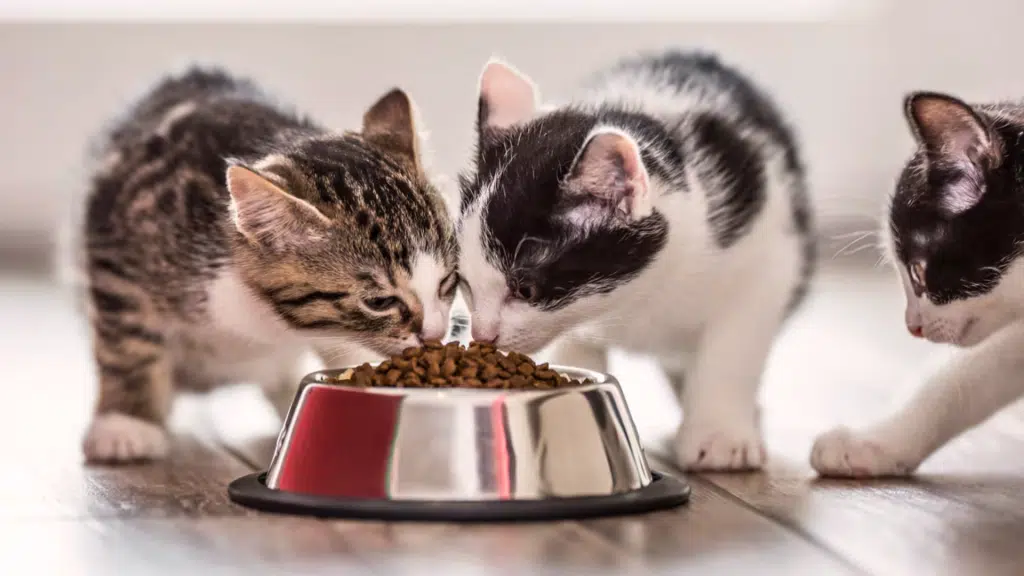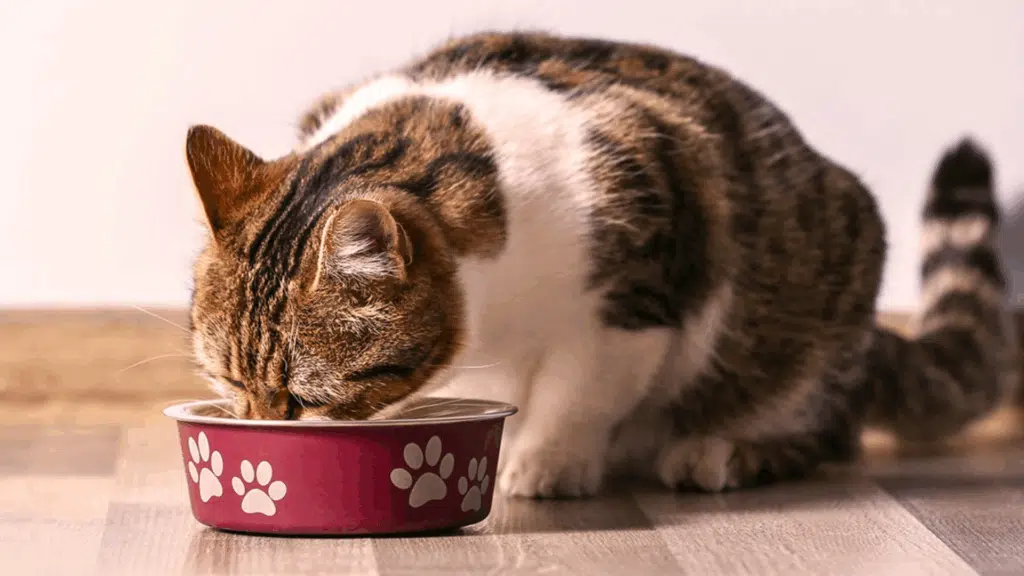Feeding a cat sounds simple, but it can be confusing, especially when every cat seems to follow its own rhythm. Some wake you up at sunrise for breakfast, while others prefer a calm evening meal.
Finding the right feeding schedule isn’t just about keeping your cat full; it affects their energy, digestion, and even their mood.
In this post, you’ll learn:
• How often should cats eat each day
• The pros and cons of morning vs evening feeding
• Tips for building a balanced routine
If you’re a new cat owner or just rethinking your pet’s mealtime, this guide will help you create a schedule that fits your cat’s natural habits and your daily life.
By the end, you’ll have a clear, simple plan for feeding your cat the right way, without all the guesswork.
Why Is a Feeding Schedule Important for Cats?
I’ve learned that cats do best when they have a clear routine.
A feeding schedule helps your cat’s body know when to expect food, which supports good digestion and keeps their appetite steady.
When you feed your cat at random times, they can start to overeat or skip meals.
A consistent schedule also helps your cat feel safe because they know what to expect each day. You might notice fewer behavior issues, like loud meowing or begging for food late at night.
Regular feeding times give your cat structure and reduce stress, especially in busy homes.
When you stick to the same routine, your cat becomes calmer, eats better, and stays healthier overall. It’s a simple change that makes a big difference for both of you.
How Often Should You Feed Your Cat?

How often you feed your cat depends on their age, health, and routine. Most healthy adult cats do well with a two-meal plan, one in the morning and one in the evening.
This schedule helps control hunger, supports digestion, and prevents overeating.
Kittens need to eat more often, around three to four small meals daily, because they grow fast and have higher energy needs.
Senior cats or those with health issues may do better with smaller, frequent meals that are easier to digest.
Cats who eat dry food often like to nibble throughout the day, while wet food eaters need set mealtimes since it doesn’t stay fresh long. Every cat is different, so watch how yours reacts to mealtime.
A routine that keeps them satisfied, active, and at a healthy weight is the right schedule for you both.
How Does a Cat’s Age Affect Their Feeding Schedule?
Cats need different feeding routines as they grow older. Their bodies change, and so do their energy levels and digestion. Here’s how I adjust feeding times and portions for each stage to help you plan what works best for your cat.
1. Kittens: Frequent Small Meals for Growth
I’ve found that kittens need three to four small meals a day. Their tiny stomachs can’t handle big portions, and they burn energy fast.
Regular feeding helps them grow strong and stay active. Try spacing meals evenly, morning, midday, evening, and bedtime. As your kitten grows, slowly reduce the number of meals.
By around one year old, they can shift to two meals a day without losing energy or appetite.
2. Adults: Steady Two-Meal Plan for Balance
Adult cats do best on a steady morning and evening feeding schedule. This gives their body time to digest and keeps their hunger under control.
I like feeding my cat after I wake up and again around dinnertime, it’s easy to remember and fits daily routines.
You can adjust meal times slightly based on your schedule, but try to keep them consistent. Feeding your adult cat twice a day helps with weight control and keeps them happy and energetic.
3. Seniors: Lighter Meals Easier on Digestion
Older cats often need smaller, lighter meals since their metabolism slows down. I usually split their food into three portions to avoid upsetting their stomach.
Senior cats might also drink less water, so wet food can help with hydration. Watch for signs like leftover food or less interest in eating, and ask your vet about changing portions or timing.
Regular, gentle feeding keeps older cats comfortable and maintains steady energy throughout the day.
What Factors Should You Consider when Setting Feeding Times?
Finding the right feeding time isn’t just about when your cat feels hungry; it also has to work for you.
I’ve learned that keeping a steady routine helps both you and your cat stay on track. These are a few things to think about before setting mealtimes:
- Your Daily Schedule: Choose times that fit your routine. If you leave early or work late, plan meals around those hours.
- Your Cat’s Activity Level: Active cats may need food earlier or more often to keep up their energy.
- Indoor vs. Outdoor Habits: Outdoor cats burn more calories and might need an extra small meal, while indoor cats usually do fine with two.
- Health Conditions: Cats with diabetes, thyroid issues, or other health problems may need strict feeding times.
- Household Routine: If you have kids or multiple pets, pick meal times that cause the least stress and distraction.
- Consistency: Stick to the same times daily. Regular feeding helps your cat feel secure and reduces begging or overeating.
Free Feeding vs. Schedule Feeding Cats – What’s the Difference?
Feeding styles can vary based on your cat’s habits and your daily routine. I’ve tried both methods and learned that each has its pros and cons. Below is a simple comparison to help you decide what fits your home best.
| Feeding Method | How It Works | Pros | Cons | Best For |
|---|---|---|---|---|
| Free Feeding | You leave food out all day so your cat can eat whenever they want. | Easy for busy owners, less pressure to feed at set times. | Can lead to overeating, weight gain, or boredom eating. | Cats that eat small amounts naturally and maintain a healthy weight. |
| Scheduled Feeding | You feed at set times, usually morning and evening. | Helps with portion control, builds a routine, and strengthens your bond. | Requires consistency and time for each meal. | Cats who need weight management or thrive on a daily routine. |
Both methods can work well. I suggest watching your cat’s eating habits and energy level to see which approach keeps them happy and healthy.
What Are the Signs of a Suitable Feeding Schedule?
A good feeding schedule keeps your cat healthy, calm, and full of energy. I’ve noticed that when the routine works, your cat’s behavior and body show clear signs. This is what to look for:
- Healthy Weight: Your cat stays lean and steady without gaining or losing too much.
- Steady Energy: They’re playful during the day and relaxed at night.
- Regular Digestion: Normal litter box habits show their system is working well.
- Calm Behavior: Less meowing, begging, or pacing around mealtime.
- Finished Meals: They eat most or all of their food without rushing or leaving much behind.
- Shiny Coat and Bright Eyes: A sign that their diet and feeding schedule meet their needs.
- Predictable Hunger Cues: They expect food at regular times instead of asking all day.
Conclusion
There’s no single feeding plan that works for every cat. What matters most is finding a routine that fits your cat’s needs and your daily life.
Some cats do well with two meals a day, while others need smaller, more frequent portions.
The key is to stay consistent once you find a schedule that works. If your cat’s energy, mood, and appetite stay steady, you’re on the right track.
Don’t worry if it takes a bit of trial and error; it’s normal. Pay attention to your cat’s habits, make small adjustments when needed, and keep their comfort in mind.
A steady routine built around trust and care will help your cat stay healthy and content every day.








